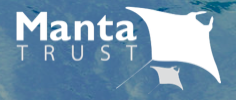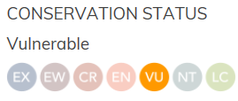Citizen Science - Be part of conservation
"In the end we will conserve only what we love; we will love only what we understand;
and we will understand only what we are taught." (Baba Dioum)

This quote is very true as governments who decide about protection zones will only protect what they understand.
Every year millions of sharks are killed for their fins or caught as “bycatch” like many other marine wildlife like manta rays, turtles, sea lions amongst others. One way to ensure that a species may survive is to protect those areas key for their reproduction (mating, birthing, etc.). Until now only 5 % of the world oceans are truly protected! Furthermore, we don’t yet know precisely the areas where for example, whale sharks give birth or mate! In order to ensure that these gentle giants will not go extinct we need to identify such areas and create marine reserves and sanctuaries, in order to halt the population declining further. The Galapagos Islands could be one of the key locations where adult female whale sharks give birth and is already recognized as a vital nursery for other shark species in the Eastern Tropical Pacific Region. On our Shark Conservation Dive Trips we collect data which furthers our understanding of whale sharks and other marine wildlife and that helps us to promote Conservation through education and awareness.
Why join our Shark Conservation Dive Trip?

- You get to dive together with an expert shark scientists in „shark rich" waters who will share all their knowledge about sharks and shark conservation with you.
- Learn how you as a diver can support the conservation of sharks, mantas and other marine wildlife and become a Shark Ambassador yourself – no scientific background needed.
- You will be supporting directly both science and conservation as for each diver traveling on our Shark Conservation Dive Trip, we make a donation for research carried out by the Galapagos Whale Shark Project.
Photo Identification programs
Photo identification is not only submitting a photo. Different platforms track different animals throughout our world's oceans. We believe that if everybody (naturalists, passengers, guides, divers and snorkelers) contributes and collaborates it would be vital to our understanding of the oceans and their marine life. Scientists can only be in one place at one time. By harnessing the power of millions of ambassadors, we can expand the scientific knowledge exponentially while supporting conservation of these marine wildlife.
Important: Set your camera to local time Galapagos. Photos support more if you summit it with date, local time and location if possible.
Whale Shark Identification
Galapagos is one of the few places where you will find 99 % female adult whale sharks. That makes it even more important to upload your photos from here. This Identification program is for all over the world. You see a whale shark? Summit your photo.

The Wildbook for Whale Sharks photo-identification library is a visual database of whale shark encounters and of individually catalogued whale sharks. The library is maintained and used by marine biologists to collect and analyze whale shark sighting data to learn more about these amazing creatures.
Each whale shark has an individual fingerprint: the pattern of spots behind the gills on the left or right sides.
The Wildbook uses photographs of this skin patterning behind the gills of each shark, and any scars, to distinguish between individual animals.
Summit your photo now: www.sharkbook.ai
Shark Count (sharks, rays, turtles, sunfish)
Shark Count is a user-friendly tool / app that allows divers visiting Galapagos to help monitor marine life in the Galapagos Marine Reserve.
Using Shark Count, divers become “citizen scientists” and make important contributions to our understanding of Galapagos marine ecosystems by recording the sharks, sea turtles, rays and ocean sunfish they encounter during their dives.
The Shark Count app displays individual reports contributed from divers at the top 20 dive sites around the archipelago. Charts and maps show the number of species observed during each dive and the best sites and times to see each species.
All data is shared with the Galapagos National Park Directorate and will benefit research and management decisions focused on protecting the Reserve’s incredible marine life.
Get the app now and start counting sharks, sea turtles, rays and ocean sunfish during your adventure in Galapagos for Apple OR Google Play .
More information: www.sharkcount.org
Turtle Identification
The Galapagos Green Sea Turtle is only commonly seen in a few places in the world, including Galapagos.
With this program you will be contributing to a better understanding of their populations, movements in the region and collaborating with their conservation.
Photo: Right side of the face and if possible also the left side. Photographs as parallel as possible to the turtle face and without obstructions like light reflection or murky water.
Summit your photo to: tnggsc@gmail.com!
The marine turtles photo identification method is an innovative recognition and control system, which is based on the cephalic scales pattern photographic analysis, unique to each individual. The principle is comparable to a human fingerprint.
Happy Whale
Happywhale engages citizen scientists to identify individual marine mammals, for fun and for science.
For science, unique identifiable markings on a whale's flukes (tail) and dorsal fin allow them to non-invasively track whale movements and stories over time. By focusing on whales, they bring attention to the marine ecosystem as a whole and the challenges we face as a global community.
First, review our instructions on how to take whale ID photos. Next, get out there and photograph whales. Last, submit your whale photos at happywhale.com. We'll run your images through our ID system built in collaboration with scientists at Cascadia Research Collective and Allied Whale. If we find a match, we'll tell you what we know about your whale. If you are the first Happywhale contributor to see a whale, congratulations! We'll let you know that too.
We welcome you to submit images from past whale sightings. Submitting older photos is a great way to start building your account and will give us valuable historical data on whales.
As each of your whales is spotted around the world, we'll send you updates. You can track your whales on your personal Happywhale page. As our site and functionality grows, you'll be able to stay in touch with team members around the globe. You'll also discover how your data is being used by scientists. What stories will your photos tell?
This wildlife identification science depends on image and video sumissions from users like you. You submit photos your photos here: https://happywhale.com/home
Manta Trust
The giant manta ray has a widespread distribution in tropical and temperate waters worldwide. You will find them also in costal areas of Ecuador and Galapagos.

Each manta has a unique pattern of spots on its ventral surface (belly), which remains largely unchanged throughout their lives.
A photograph of the ventral surface (belly) is the most important, as it reveals the individual’s unique spot pattern, and also shows the sex of the animal, which can be used to calculate proportions of males and females in the population.
Submit your photo here: www.mantatrust.org
Create Ocean Ambassadors & Education
With presentations about the 'Galapagos Whale Shark Project', the Galapagos ecosystem, oceans and marine life, we create more knowledge and understanding for divers and non-divers. Understanding a species better helps us protect it.
We believe that by education and inspiring people to protect our oceans we will create ambassadors who will work towards a better future for marine wildlife and their habitat.
Dive Expeditions
On board the dive vessel you will get daily detailed information about the 'Galapagos Whale Shark Project', the Galapagos ecosystem, the oceans and marine wildlife. A variety of general presentations as well as Q & A will be held in the evenings with the hope that we can answer all the questions you might have about the Galapagos
We will also explain how the fieldwork is carried out and you will have the opportunity to see the satellite tags your donations have provided for.
We will guide you as to how you can become a Citizen Scientist, not only during the trip but also how you can help with data and environmental issues when travelling or at home.
Name a Whale-Shark-Contest
2023
2022
2021
2020
Plastic Awareness
Galapagos Shark Diving urges travelers to minimize their plastic usage by bringing along a refillable water bottle for water, tea, or coffee during their onboard experience, as well as a reusable bag. In case a passenger forgets to bring these items, we offer branded water bottles and cotton bags for sale on board, with the profits from these purchases going directly to support the Galapagos Whale Shark Research project.

"With plastic there is no ‘away’. Our modern obsession with throw-away plastic in the name of convenience comes at a high price. Marine birds and wildlife become entangled, or choke on our plastic waste, or mistake it for food. It eventually breaks down into tiny toxic particles, which are eaten by plankton and fish, entering our food chain. A 2015 study estimated that 90% of the world’s seabirds and 25% of fish contain plastic in their stomachs." www.lessplastic.co.uk
Microplastic pollution is also a major threat to filter-feeding animals such as manta rays, whale sharks and baleen whales. These iconic animals are at risk of exposure to microplastic contamination and associated toxins.
And everybody can contribute. Even if you start with small things - just do it!
Another way of contributing is to support Beach-Clean-Ups everywhere you go. Often you will find organized Beach-Clean-Ups. And if not just do it by yourself! Everybody can contribute everywhere! Join now!































